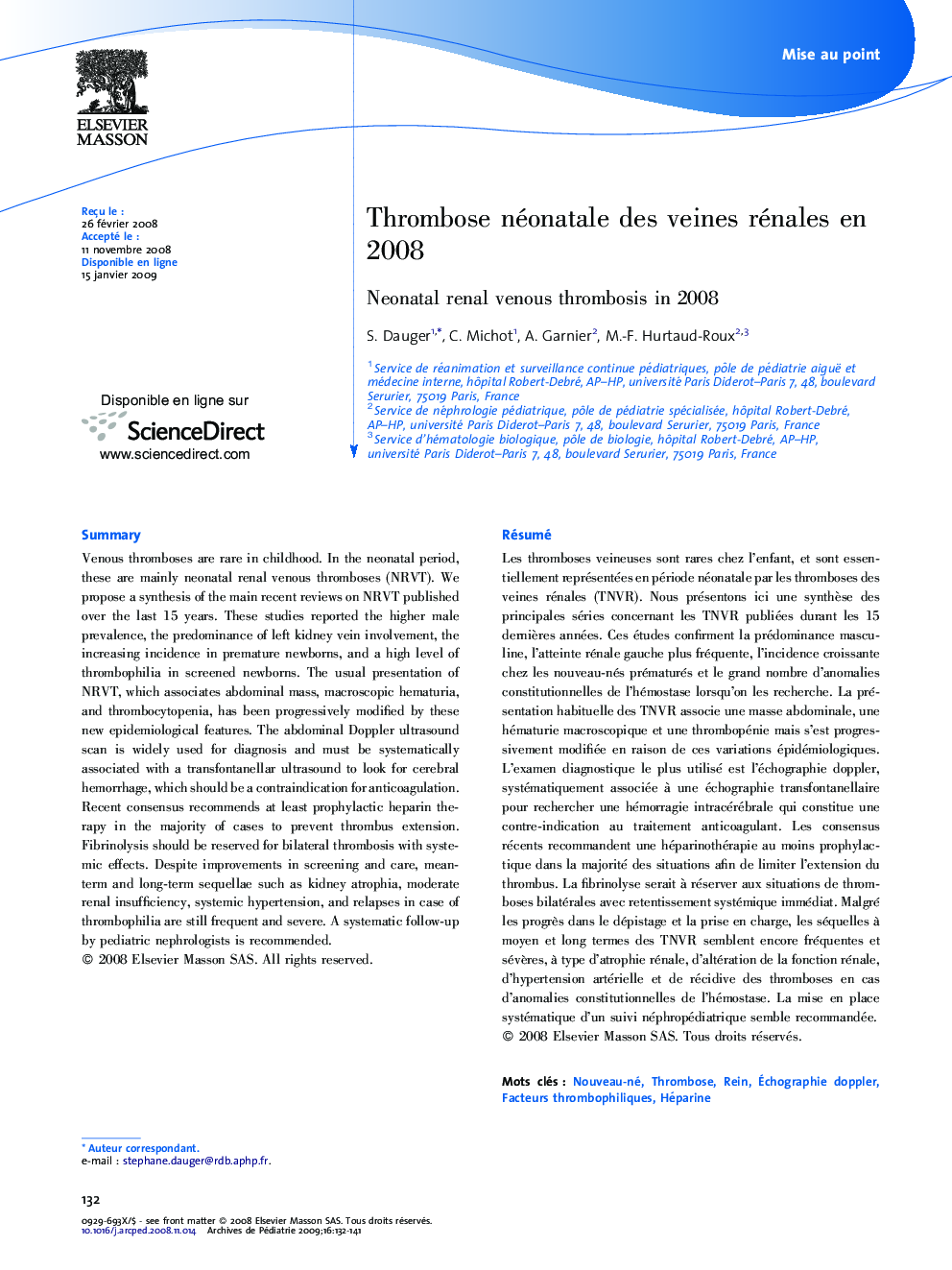| Article ID | Journal | Published Year | Pages | File Type |
|---|---|---|---|---|
| 4148308 | Archives de Pédiatrie | 2009 | 10 Pages |
Abstract
Venous thromboses are rare in childhood. In the neonatal period, these are mainly neonatal renal venous thromboses (NRVT). We propose a synthesis of the main recent reviews on NRVT published over the last 15 years. These studies reported the higher male prevalence, the predominance of left kidney vein involvement, the increasing incidence in premature newborns, and a high level of thrombophilia in screened newborns. The usual presentation of NRVT, which associates abdominal mass, macroscopic hematuria, and thrombocytopenia, has been progressively modified by these new epidemiological features. The abdominal Doppler ultrasound scan is widely used for diagnosis and must be systematically associated with a transfontanellar ultrasound to look for cerebral hemorrhage, which should be a contraindication for anticoagulation. Recent consensus recommends at least prophylactic heparin therapy in the majority of cases to prevent thrombus extension. Fibrinolysis should be reserved for bilateral thrombosis with systemic effects. Despite improvements in screening and care, mean-term and long-term sequellae such as kidney atrophia, moderate renal insufficiency, systemic hypertension, and relapses in case of thrombophilia are still frequent and severe. A systematic follow-up by pediatric nephrologists is recommended.
Related Topics
Health Sciences
Medicine and Dentistry
Perinatology, Pediatrics and Child Health
Authors
S. Dauger, C. Michot, A. Garnier, M.-F. Hurtaud-Roux,
